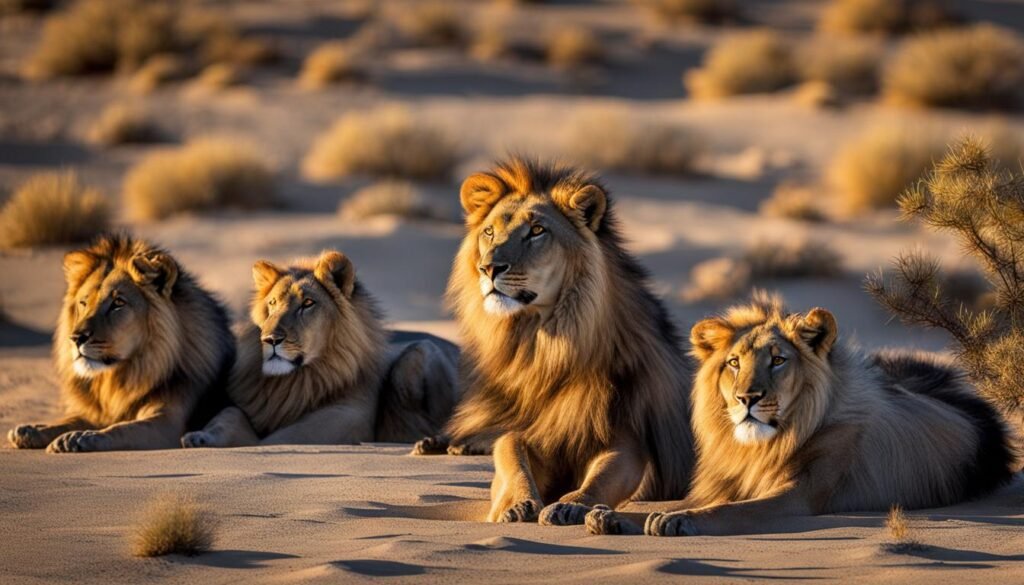Greetings! I’m thrilled to take you on a virtual safari through the untamed lands of Death Valley. Get ready to explore the fascinating world of Death Valley animals and witness the incredible adaptability of these unique species in extreme climates.
Death Valley, renowned for its breathtaking landscapes and scorching temperatures, is also home to an astonishing variety of wildlife. Despite the unforgiving conditions, the park hosts over 400 animal species that have evolved and thrived in this harsh desert environment.
Key Takeaways:
- Death Valley is teeming with diverse animal species that have adapted to survive in extreme climates.
- The park houses over 400 unique animal species that showcase their exceptional resilience.
- Exploring Death Valley allows you to witness the remarkable adaptability of desert animals.
- From the desert tortoise to the bighorn sheep, each species has developed specific strategies for survival in this arid environment.
- By respecting the wildlife and observing from a distance, visitors can contribute to the conservation efforts of these extraordinary animals.
Adaptations for Survival: Thriving in Harsh Environments
Animals in Death Valley have developed remarkable adaptations to cope with the challenging desert conditions. These adaptations enable them to survive and thrive in an environment characterized by extreme heat and limited water.
One of the fascinating adaptations of desert animals is their ability to drink less water. Species like the bighorn sheep and kangaroo rats have evolved to efficiently use the limited water resources available in Death Valley. These animals can go for extended periods without drinking at all, relying on the water they obtain from their food and metabolic processes.


Additionally, some creatures in Death Valley, such as the desert tortoise and jackrabbit, have developed strategies to conserve water and escape the scorching heat. Desert tortoises can store water in their bladder and absorb it back into their system when needed. Jackrabbits have large ears that help dissipate heat and maintain a lower body temperature.
Adaptations for Water Conservation:
- Bighorn sheep and kangaroo rats can survive on minimal water intake.
- Desert tortoises store water in their bladder.
Adaptations for Escaping Heat:
- Jackrabbits have oversized ears for heat dissipation.
These unique adaptations demonstrate the resilience of desert animals and their ability to thrive in harsh environments like Death Valley. By understanding and appreciating these remarkable adaptations, we gain insight into the incredible diversity of life and the extraordinary ways different species have evolved to survive.
Nocturnal vs Diurnal: Surviving the Temperature Extremes
To avoid the scorching heat of the day, many of the animals in Death Valley are nocturnal, becoming active during the cooler nights. Nocturnal wildlife, such as coyotes and jackrabbits, have adaptations that help them navigate the dark and stay cool.
Nocturnal animals are equipped with enhanced vision and hearing, allowing them to effectively hunt or forage in the darkness. Their eyes are specialized to capture even the tiniest bit of available light, giving them a significant advantage when it comes to nighttime activities. Moreover, their keen sense of hearing allows them to detect subtle sounds in their surroundings, enabling them to locate prey or detect potential threats.
Additionally, nocturnal animals have evolved various cooling strategies to regulate their body temperature in the extreme desert conditions. They typically have larger surface areas, which helps them dissipate heat more efficiently. Some nocturnal creatures, like kangaroo rats, possess special adaptations in their kidneys that allow them to concentrate their urine, minimizing water loss. This enables them to survive without drinking for long periods.
On the other hand, some animals in Death Valley have adapted to tolerate extreme temperatures during the day and are considered diurnal. Roadrunners and rabbits, for instance, possess physical attributes that assist in combating the oppressive heat. They have high body temperatures, which reduces the temperature difference between their bodies and the environment, helping to prevent excessive heat absorption. Furthermore, their oversized ears play a crucial role in dissipating heat. The large surface area of the ear allows for increased heat loss through evaporation.
The contrast between nocturnal and diurnal animals in Death Valley demonstrates the remarkable ways in which different species have adapted to survive in the face of extreme temperatures. While nocturnal creatures utilize darkness and employ various cooling strategies, diurnal animals rely on physical attributes and behaviors to cope with the scorching heat of the desert.
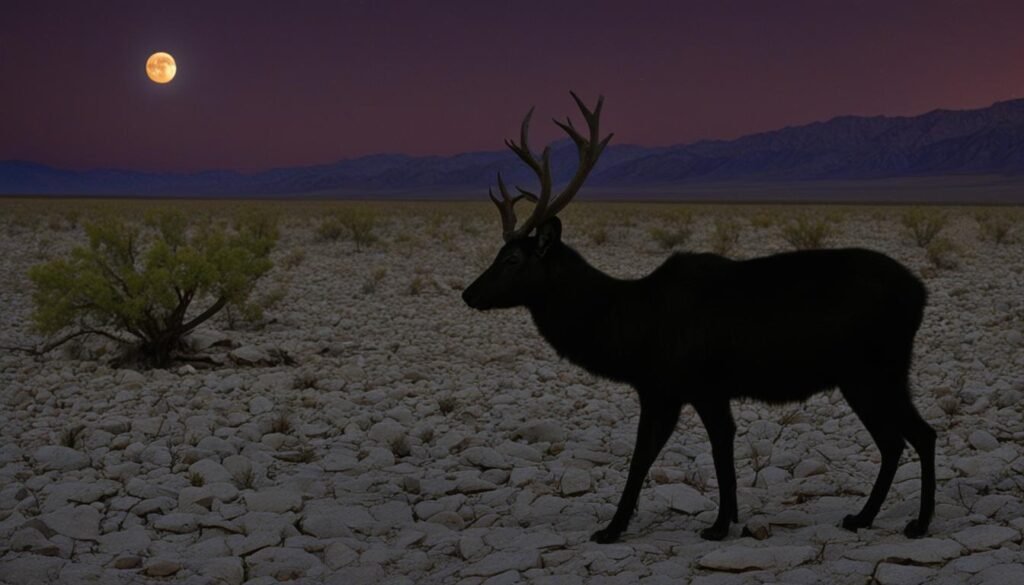

Endangered Species and Wildlife Conservation Efforts
Death Valley is a precious ecosystem that supports a diverse range of life, including several endangered species. Some of these endangered species include the pupfish and the badwater snails, which are found exclusively in Death Valley. To safeguard the delicate balance of the Death Valley ecosystem and ensure the survival of these vulnerable species, dedicated efforts are underway.
Environmental organizations and park authorities have implemented a variety of conservation initiatives to protect the endangered species and their habitats. These efforts primarily focus on habitat restoration, conservation education, and the regulation of human interactions with the wildlife. By restoring and preserving the habitats of these species, we can help them thrive in their natural environment.
Habitat restoration projects involve revitalizing and recreating suitable habitats for endangered species. This includes efforts to restore wetlands, control invasive species, and regulate water flow to benefit the unique flora and fauna of Death Valley. These restoration projects play a vital role in supporting the survival of endangered species by providing them with the necessary resources and shelter.
Conservation education is another crucial aspect of protecting endangered species in Death Valley. Park authorities and environmental organizations work together to raise awareness among visitors, helping them understand the importance of preserving the delicate ecosystem and respecting the wildlife. Through educational programs, guided tours, and informational resources, visitors are encouraged to play an active role in conservation efforts.
Regulating human interactions with wildlife is essential to minimize disturbances and ensure the well-being of endangered species. Guidelines are in place to promote responsible observation and discourage activities that may harm the animals or their habitats. By maintaining a safe distance and respecting the natural behavior of the wildlife, visitors can contribute to the preservation of these extraordinary creatures.
Promoting Wildlife Conservation
Conservation efforts in Death Valley extend beyond protecting endangered species. They also focus on preserving the overall biodiversity and balance of the ecosystem. Ongoing research and monitoring projects help gather valuable data on the population trends and habitat requirements of various species, guiding conservation efforts.
Joining hands with national and international conservation organizations, Death Valley aims to raise awareness about the importance of wildlife conservation. Collaboration with universities, research institutions, and experts in the field ensures a scientific approach to understanding and protecting the diverse wildlife of Death Valley.
Conservation efforts are crucial in safeguarding the fragile ecosystem of Death Valley for future generations. They play a vital role in preserving the unique biodiversity, fostering the coexistence of diverse species, and promoting sustainable tourism in the park.
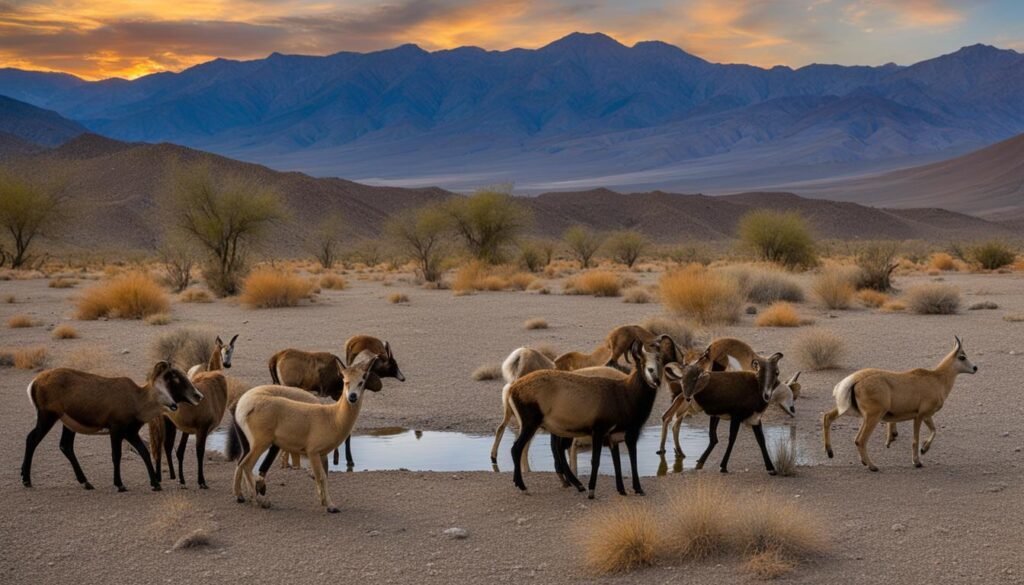

The Avian Diversity of Death Valley
When it comes to birdwatching, Death Valley is a true paradise. With over 290 bird species calling the park home, it is a haven for avian enthusiasts. The unique desert habitats found in Death Valley, combined with its proximity to migratory routes, make it an ideal stopover for a wide range of bird species.
From majestic raptors like hawks and owls to vibrant songbirds like hummingbirds and warblers, birdwatchers will find a diverse array of feathered wonders to observe and admire in Death Valley. Whether you’re an expert birder or a casual nature lover, the avian diversity of this desert landscape is sure to captivate and inspire.
To fully appreciate the avian abundance in Death Valley, it helps to explore the park’s different habitats. From the riparian zones along the park’s many springs and rivers to the higher elevation pinyon-juniper woodlands, each distinct ecosystem offers a unique opportunity to encounter a variety of bird species.
The migratory patterns of birds further enhance the park’s avian diversity, as many species stop in Death Valley while traveling to and from their breeding grounds. During the spring and fall, birdwatchers may have the chance to witness the vibrant colors and lively chirps of migratory birds passing through the park.


Whether you’re an avid birdwatcher or simply appreciate the beauty of these winged creatures, a visit to Death Valley provides an incredible opportunity to witness the fascinating world of avian life. So grab your binoculars and prepare for a birding adventure like no other in the heart of desert habitats.
Flora and Fauna: The Interconnected Web of Life
The unique flora of Death Valley plays a crucial role in supporting the diverse animal life in the park. From cacti to succulents, the plant species have adapted to survive in the harsh desert environment. Their interconnected relationship with the animal species creates a delicate balance within the ecosystem, highlighting the interdependence of all living organisms in Death Valley.
Flora and fauna are two integral components of the Death Valley ecosystem. The desert plants, including various types of cacti, shrubs, and succulents, have evolved remarkable adaptations to thrive in the extreme environmental conditions. These plants have developed mechanisms to conserve water and withstand the scorching heat of the desert. The flora not only provides nourishment and shelter for the resident animal species but also helps in regulating the overall climate of the park.
The interconnectedness of plants and animals in Death Valley is evident in their mutual dependencies. For example, animals rely on desert plants for food and habitat, while plants depend on animals for pollination and seed dispersal. This intricate web of life showcases the delicate balance that exists within the Death Valley ecosystem.
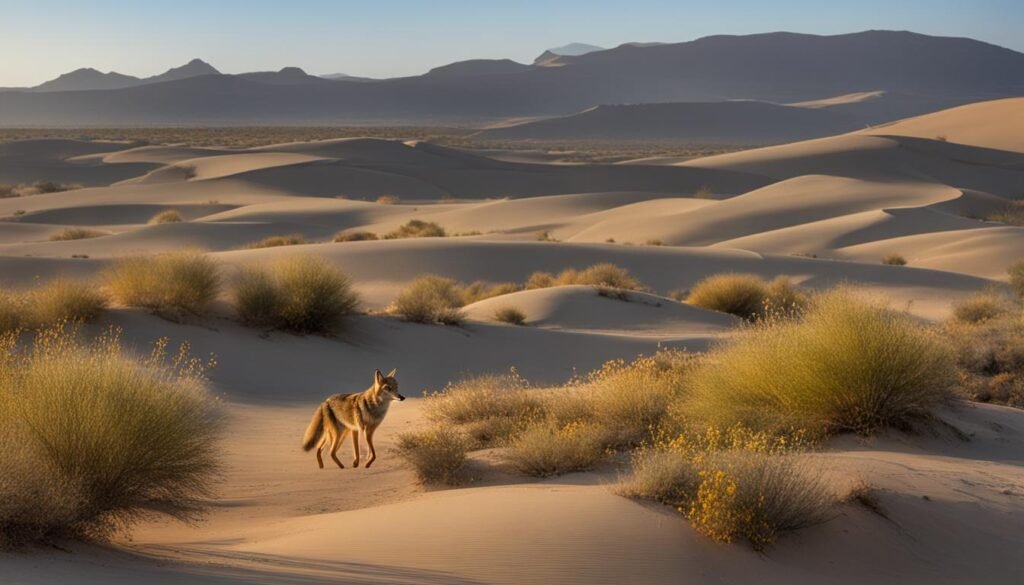

The fascinating relationship between flora and fauna in Death Valley serves as a reminder of the interconnectedness of all living organisms. Each plant and animal species contributes to the overall health and sustainability of the ecosystem, creating a harmonious coexistence in this harsh desert landscape.
Exploring Death Valley’s Primal Past: Fossils and Extinct Species
Death Valley, with its vast expanse of primal lands, holds a treasure trove of ancient history in its fossil record. Amongst these remnants of the past, one can discover the fascinating remains of extinct species, including the enigmatic ammonites.
Ammonites, ancient marine animals that lived millions of years ago, provide valuable insights into the geological history of Death Valley. These spiral-shaped creatures with intricate chambers offer a glimpse into the distant past, when the area was submerged under ancient seas.
To witness the awe-inspiring fossilized remains of ammonites, fossil enthusiasts can venture to places like Bighorn Gorge, where remnants of these ancient creatures are waiting to be discovered. By exploring these primal lands, visitors can immerse themselves in the deep history of Death Valley and gain a newfound appreciation for these extinct species.
The Delicate Balance of Human-Wildlife Interaction
When visiting Death Valley, it is essential to recognize the impact of our actions on the wildlife and make responsible choices. The unique animal species of Death Valley rely on their natural behaviors to survive in this extreme environment. However, human interference, such as feeding or getting too close to the animals, can disrupt their delicate balance and cause harm to their well-being.
Responsible observation is key to preserving the beauty and diversity of Death Valley’s wildlife. By following park guidelines and observing from a distance, we can minimize our human impact on the animals and their habitats. This allows them to retain their natural behaviors and thrive in this harsh desert environment.
Here are some important guidelines to ensure responsible observation:
- Avoid feeding the animals: While it may be tempting to share food with the wildlife, it can disrupt their natural feeding habits and cause dependence on human food sources. This can lead to health issues and changes in their behavior.
- Keep a safe distance: Maintain a respectful distance from the animals to avoid causing stress or fear. Use binoculars or zoom lenses to observe them closely without intruding on their space.
- Stay on designated paths: Stick to designated trails and paths to reduce wildlife disturbance and prevent habitat destruction. Avoid trampling on vegetation or venturing into restricted areas.
- Do not touch or approach animals: It is important to remember that these are wild animals and touching or approaching them can be harmful to both you and the animals. Keep a safe distance and let them carry on with their natural behaviors.
- Dispose of trash properly: Ensure that you dispose of your trash in designated bins to prevent attracting wildlife and reducing the risk of them consuming harmful materials.
By practicing responsible observation, we can play a vital role in conserving the unique animal species of Death Valley. Let’s appreciate their beauty and resilience from afar, allowing them to thrive in their natural habitat.


Exploring Wildlife Beyond Death Valley Animals
In addition to the diverse animal species found in Death Valley, the park is also home to a variety of other wildlife. The desert landscape provides a unique habitat for butterflies, amphibians, reptiles, and other fascinating creatures. Exploring the different ecosystems in Death Valley offers opportunities to encounter a wide range of desert wildlife.
Butterflies
Death Valley is a haven for butterfly enthusiasts, with numerous species fluttering through the desert. From the small Skipper butterflies to the vibrant Swallowtails, these delicate creatures add beauty to the arid landscape. With their intricate patterns and colors, butterflies are a delightful sight to behold as they flit among the desert flowers.
Amphibians
Despite the harsh desert environment, Death Valley is home to a few amphibian species that have adapted to survive in this extreme region. The desert spadefoot toad, for instance, can be found in temporary pools created by seasonal rains. These resilient amphibians emerge from their dormant state to breed and lay eggs, taking advantage of the brief periods of water availability.
Reptiles
Reptiles thrive in the dry desert conditions of Death Valley. Lizards, such as the western banded gecko and the desert horned lizard, can be seen basking in the sun or scurrying across the rocky terrain. The desert kingsnake, a nonvenomous snake species, also calls Death Valley home and plays an important role in maintaining the ecosystem’s balance.
By venturing beyond the realm of Death Valley animals, visitors can gain a deeper appreciation for the diverse and resilient wildlife that inhabits this extraordinary desert landscape.
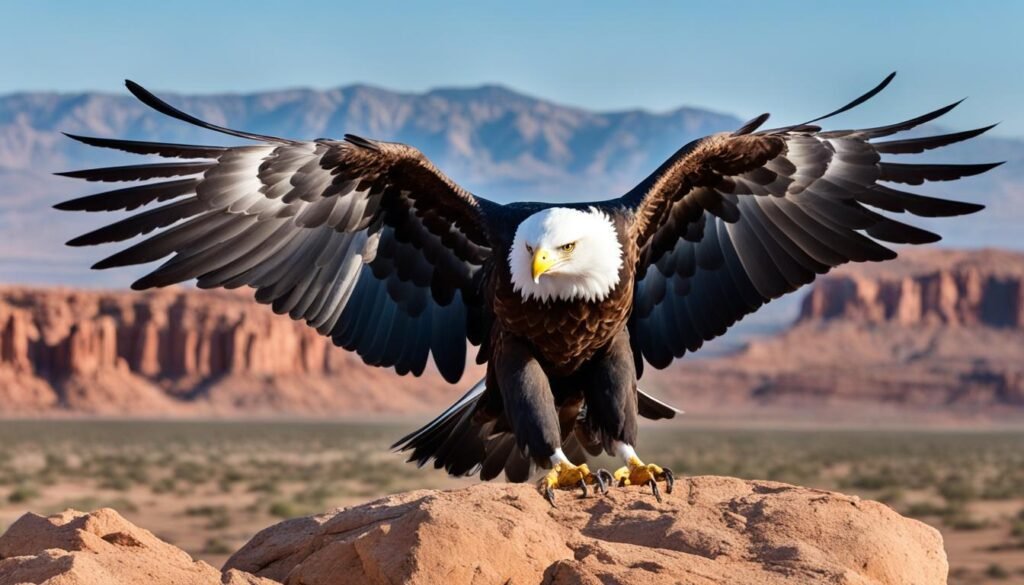

Conclusion
The unique fauna of Death Valley showcases the incredible adaptability and resilience of animals in the face of extreme conditions. From desert bighorn sheep to nocturnal predators, each species has found a way to survive and thrive in Death Valley.
By respecting and appreciating the wildlife from a distance, visitors can contribute to the ongoing conservation efforts and ensure the preservation of this remarkable ecosystem for future generations.
The diverse animal species in Death Valley have evolved fascinating adaptations to cope with the harsh desert environment. The bighorn sheep and kangaroo rats have mastered the art of water conservation, while the desert tortoise and jackrabbit have developed strategies to escape the scorching heat. These remarkable adaptations allow them to flourish in an environment where water is scarce and temperatures can reach extreme highs.
Furthermore, the delicate balance of human-wildlife interaction must be maintained to safeguard the well-being of the animals. By adhering to park guidelines and observing wildlife from a respectful distance, visitors can minimize disturbances to their natural behaviors. This plays a crucial role in protecting the unique species that call Death Valley home and ensuring their long-term survival.
FAQ
How many animal species can be found in Death Valley?
Over 400 animal species can be found in Death Valley.
What adaptations do animals in Death Valley have to survive the harsh conditions?
Animals in Death Valley have developed adaptations such as drinking less water, conserving water, and escaping the heat to survive in the desert environment.
Are animals in Death Valley mostly active during the day or night?
Many animals in Death Valley are nocturnal and become active during the cooler nights to avoid the scorching heat of the day.
Are there any endangered species in Death Valley?
Yes, Death Valley is home to endangered species such as the pupfish and the badwater snails.
What conservation efforts are in place to protect the endangered species in Death Valley?
Conservation efforts in Death Valley include habitat restoration, conservation education, and regulation of human interactions with wildlife.
How many bird species can be found in Death Valley?
More than 290 bird species call Death Valley home.
How do the unique flora of Death Valley support the animal life?
The diverse plant species in Death Valley have adapted to the desert environment and play a crucial role in supporting the diverse animal life in the park.
Are there any fossils in Death Valley?
Yes, Death Valley holds a rich fossil record, including the remains of extinct species such as ammonites.
How can visitors ensure the preservation of the unique animal species in Death Valley?
Visitors should respect the wildlife and observe from a distance, avoiding human interference that may disrupt natural behaviors.
What other wildlife can be found in Death Valley besides animals?
In addition to a variety of animal species, Death Valley is also home to butterflies, amphibians, and reptiles.

